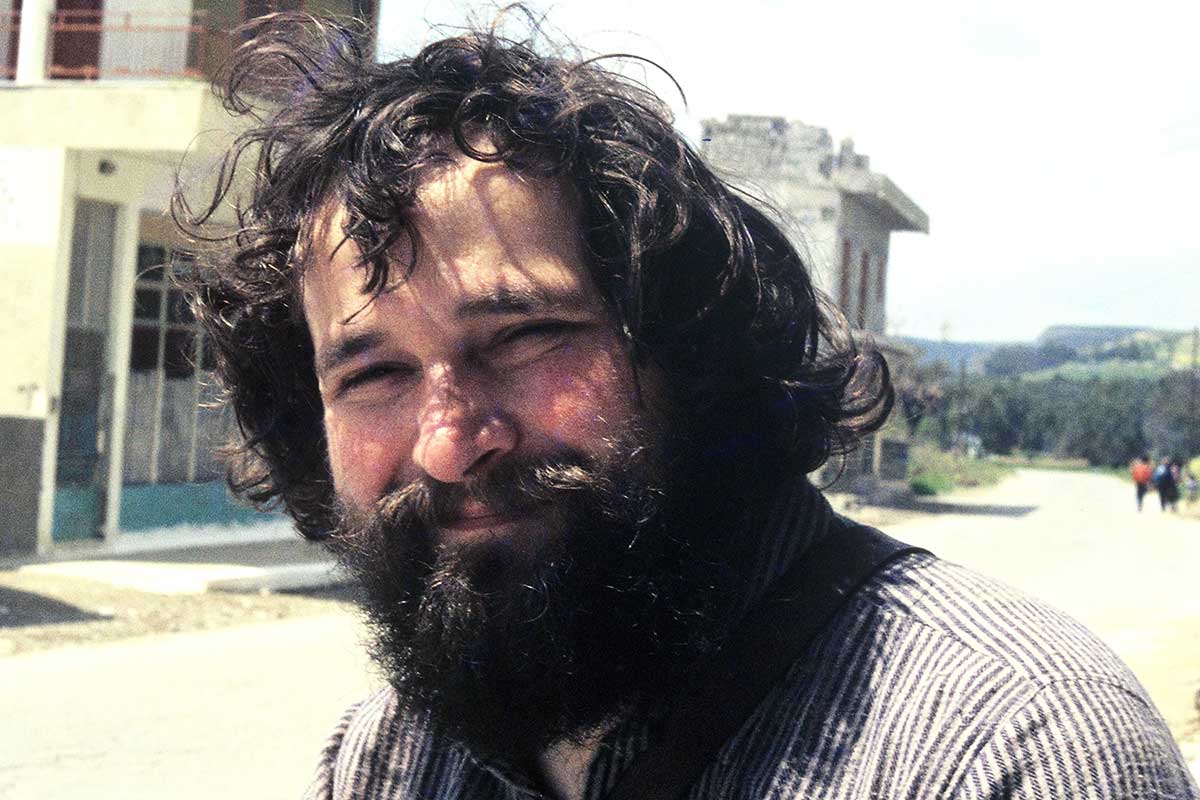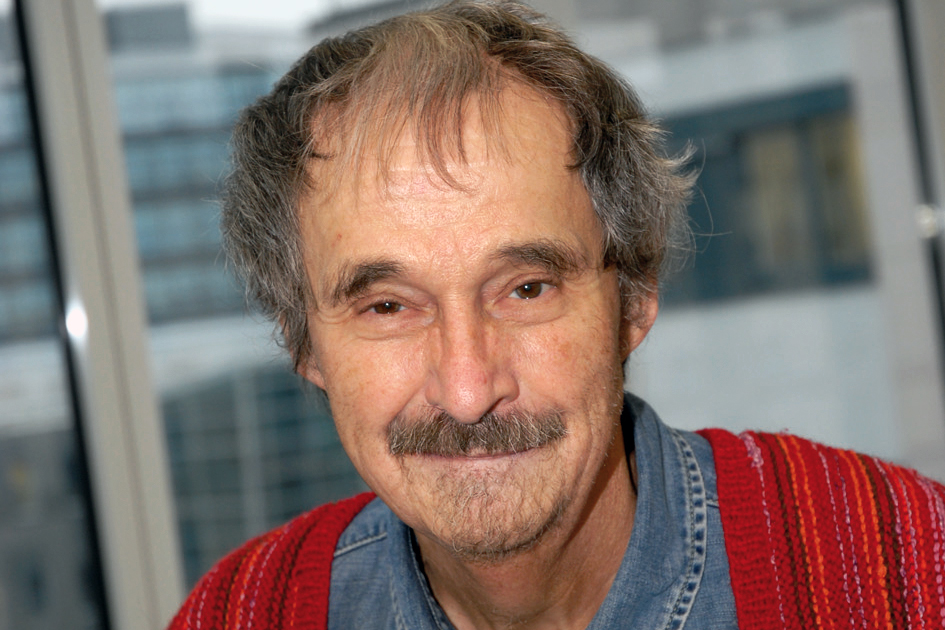Tackling the killer in cancer: metastasis
Hartmut Beug was a founding member of the IMP, joining as a Senior Scientist in 1988. During his 22 years at the IMP, he achieved recognition and a lasting impact in two fields of research, haematopoiesis and cancer metastasis. His lab was the first to show the importance of the epithelial-mesenchymal transition in metastasis. Sadly, Hartmut succumbed to cancer in 2011, just a year after retiring from the IMP. He left a legacy not only in terms of his research, but also in the form of the “Hartmut and Margrit Beug Foundation for Metastasis Research”.

Before joining the IMP, Hartmut Beug had already established himself as a key player in cancer research. Working at the DKFZ and EMBL in Heidelberg during the 1970s and 1980s, he helped pioneer and establish the concept of “oncogene cooperativity” – the idea that mutations can cooperate to turn normal cells into cancerous ones. He was also one of the first to establish methods to culture primary red blood cells. Combining these cell culture systems with conditional viruses allowed him to switch oncogenes on and off, and thereby study their effects on the expansion or differentiation of primary cells.
In his new lab at the IMP, Hartmut delved further into the molecular mechanisms of these oncogenes. “He was one of the first to look at how growth factor signalling and transcriptional control cooperate to induce leukaemia”, says Marieke von Lindern, who joined the lab as a postdoc in 1992. Hartmut chose to focus on the avian erythroblastosis virus, which encodes two oncogenes – a mutated epidermal growth factor receptor and a mutated thyroid hormone receptor. His group showed that the oncogenic thyroid hormone receptor no longer responds correctly to thyroid hormone and instead constitutively represses transcription of certain red blood cell genes (Zenke et al, Cell 1990). They subsequently showed that the non-oncogenic version of the thyroid hormone receptor is important for normal red blood cell differentiation (Schroeder et al, Oncogene 1992), while that of the epidermal growth factor is important for self-renewal of the progenitors (Hayman et al, Cell 1993).
Discovering how genetic modifications alter the cellular responses to growth factors led Hartmut towards a new avenue of research: metastasis. Metastasis is the cause of death in over 80% of cancer patients. As a first step in metastasis, primary tumour cells locally invade the surrounding tissue. Hartmut’s group showed that transforming growth factor (TGF)-beta cooperates with the small GTPase Ras to promote the invasiveness of tumour cells (Oft et al, Genes Dev 1996). Building on this breakthrough, they then showed that TGF-beta signalling is required to both induce and maintain metastasis during late-stage tumourigenesis (Oft et al, Curr Biol 1998). This discovery was the first indication that malignant traits are not hardwired in the genome of cancer cells and both papers have been cited over 700 times. Hartmut’s group further dissected the roles of Ras signalling pathways in metastasis (Janda et al, J Cell Biol 2002); this paper has garnered over 800 citations. Martin Jechlinger, a PhD student in Hartmut’s lab from 1998 to 2003, was involved in this side of the lab’s work. “In essence,” he says, “Hartmut’s group was the first to show the importance of the epithelial-mesenchymal transition in metastasis.”
The diversity of the research outlined above reflects Hartmut’s open-mindedness and seemingly endless supply of new ideas. “In his enthusiasm, he wanted to do everything”, Marieke says. “That’s what made him such an outstanding scientist”, Martin adds.

Around 2005, Hartmut was diagnosed with cancer and had to undergo treatment. Eva Wiedemann, who worked as a Research Assistant in Hartmut’s lab for 19 years until his retirement, recalls that the lab members would visit him weekly to report on their work and get his input. “He never lost the scientific spirit”, Eva says. Fortunately, the treatment was successful and Hartmut returned to the lab, working for about another 5 years before retiring. Sadly, the cancer returned soon after his retirement and proved incurable. Hartmut passed away shortly thereafter.
During the last few months of his life, Hartmut established the “Hartmut and Margrit Beug Foundation for Metastasis Research”. Hartmut had always been frustrated by the inability to obtain funding for innovative proposals that test new, unproven ideas. To overcome this obstacle, the Foundation gives “seed money” to early career researchers to develop these novel ideas, so they eventually become competitive for traditional grants. “Stimulating and helping young people in their careers was something that Hartmut found extremely important”, says Marieke, who is on the Board of Trustees. Indeed, Hartmut often yielded last authorship on publications to the group member who led the project. “This is not to say he wasn’t involved; on the contrary”, says Martin, who serves on the Executive Board of the Foundation.
The Foundation ensures that Hartmut’s vision and work towards understanding the molecular basis of cancer metastasis are carried forward by new generations of young scientists. His devotion and generosity continue to support innovative discoveries with the potential to save lives. At the IMP and beyond, Hartmut is remembered as devoted, generous, and inspiring, but also as a ‘character’ who had some charming quirks and who would do things his way.
First published in 2020.
References
v-erbA oncogene activation entails the loss of hormone-dependent regulator activity of c-erbA.
Zenke M, Muñoz A, Sap J, Vennström B, Beug H; Cell 1990
Modulation of normal erythroid differentiation by the endogenous thyroid hormone and retinoic acid receptors: a possible target for v-erbA oncogene action.
Schroeder C, Gibson L, Zenke M, Beug H; Oncogene 1992
Self-renewal and differentiation of normal avian erythroid progenitor cells: regulatory roles of the TGF alpha/c-ErbB and SCF/c-kit receptors.
Hayman MJ, Meyer S, Martin F, Steinlein P, Beug H; Cell 1993
TGF-beta1 and Ha-Ras collaborate in modulating the phenotypic plasticity and invasiveness of epithelial tumor cells.
Oft M, Peli J, Rudaz C, Schwarz H, Beug H, Reichmann E; Genes Dev 1996
TGF beta signaling is necessary for carcinoma cell invasiveness and metastasis.
Oft M, Heider KH, Beug H; Curr Biol 1998
Ras and TGF beta cooperatively regulate epithelial cell plasticity and metastasis: dissection of Ras signaling pathways.
Janda E, Lehmann K, Killisch I, Jechlinger M, Herzig M, Downward J, Beug H, Grünert S; J Cell Biol 2002